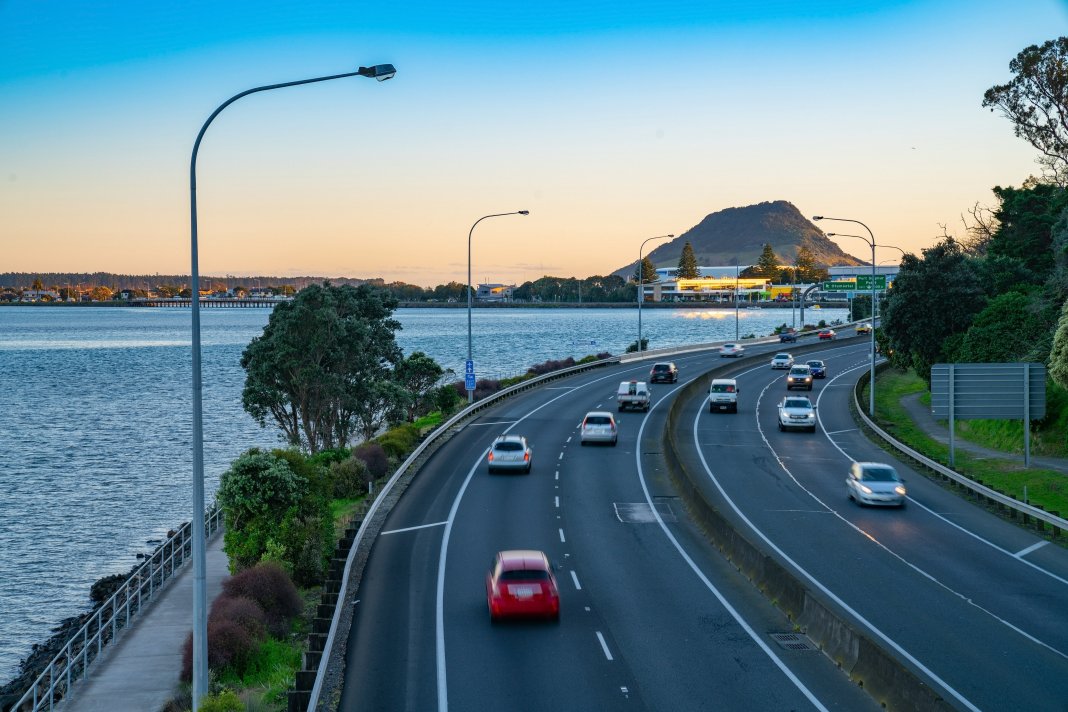The top 20 cities around the world for transportation and mobility all have one thing in common. They have all invested in various transportation options, including extensive public transportation networks, well-developed cycling infrastructure, walkable neighbourhoods, and innovative mobility solutions. Their metropolitan areas also have populations of over a million people.
Small cities, like Tauranga, face unique traffic challenges due to their limited resources and infrastructure compared to these larger metropolitan areas. However, several approaches can be adopted by small cities to mitigate their traffic problems and technology can play a big role in improving transportation efficiency.
Real-time data, enhancing traffic management systems, and promoting more efficient transportation options are some ways technology can be used to achieve this. Here are some of these technologies in more detail:
Intelligent traffic signal control
Implementing smart traffic signal control systems that use real-time data to adjust signal timing based on traffic conditions can help optimise traffic flow at intersections. These systems can reduce congestion and improve overall traffic efficiency.
Traffic data and analytics
Utilising advanced traffic monitoring technologies, such as cameras, sensors, and GPS data, can provide valuable insights into traffic patterns and congestion hotspots.
Analysing this data can help city planners and traffic management authorities make informed decisions to improve traffic flow.
Mobile apps for navigation route planning
Navigation apps with real-time traffic updates, like Google Maps or Waze, can guide drivers to less congested routes, diverting traffic away from heavily congested areas and spreading the traffic load across the road network.
Smart parking solutions
Implementing smart parking systems that provide real-time information from parking sensors about available parking spaces can help drivers find parking quickly.
Way-finding screens can direct traffic to available parks and reduce the time spent searching for parking, which can contribute to traffic congestion.
Parking technology can be installed in on-street and off-street parking locations, and can also inform decisions about car park volume and location planning.
Public transportation apps
Mobile apps that offer real-time information about public transportation schedules, routes, and vehicle locations can encourage more people to use public transit, reducing the number of vehicles on the road.
Ride-sharing and carpooling platforms
Technology-enabled ride-sharing and carpooling services can help reduce the number of single-occupancy vehicles on the road by facilitating ridesharing arrangements, especially during peak hours.
Real-time traffic information displays
Electronic message boards and dynamic signage that provide real-time traffic updates can inform drivers about road conditions, accidents, and alternative routes, allowing them to make informed decisions while on the road.
Predictive traffic modelling
Utilising predictive analytics can help forecast traffic patterns and congestion, enabling authorities to take proactive measures to prevent or mitigate traffic issues.
Connected and autonomous vehicles
Connected vehicle technology can enable vehicles to communicate with each other and with traffic infrastructure, optimising traffic flow and reducing accidents. Additionally, the integration of autonomous vehicles could potentially lead to more efficient and safer traffic management.
By harnessing technology in these ways, I believe that cities like Tauranga can create more efficient and sustainable transportation systems, reduce congestion, and improve overall mobility for residents and visitors alike. While we have begun to implement some of these technologies in Tauranga we still have a way to go before we can be on the same page as cities such as Helskini and Singapore who lead the way in multi-modal transportation.
As we navigate our journey of mode-shift and enhancing our current options for travel around our city, could we put technology at the centre of every decision and set our goal for Tauranga to be in the top 20 cities in the world for transportation and mobility within the next decade?




